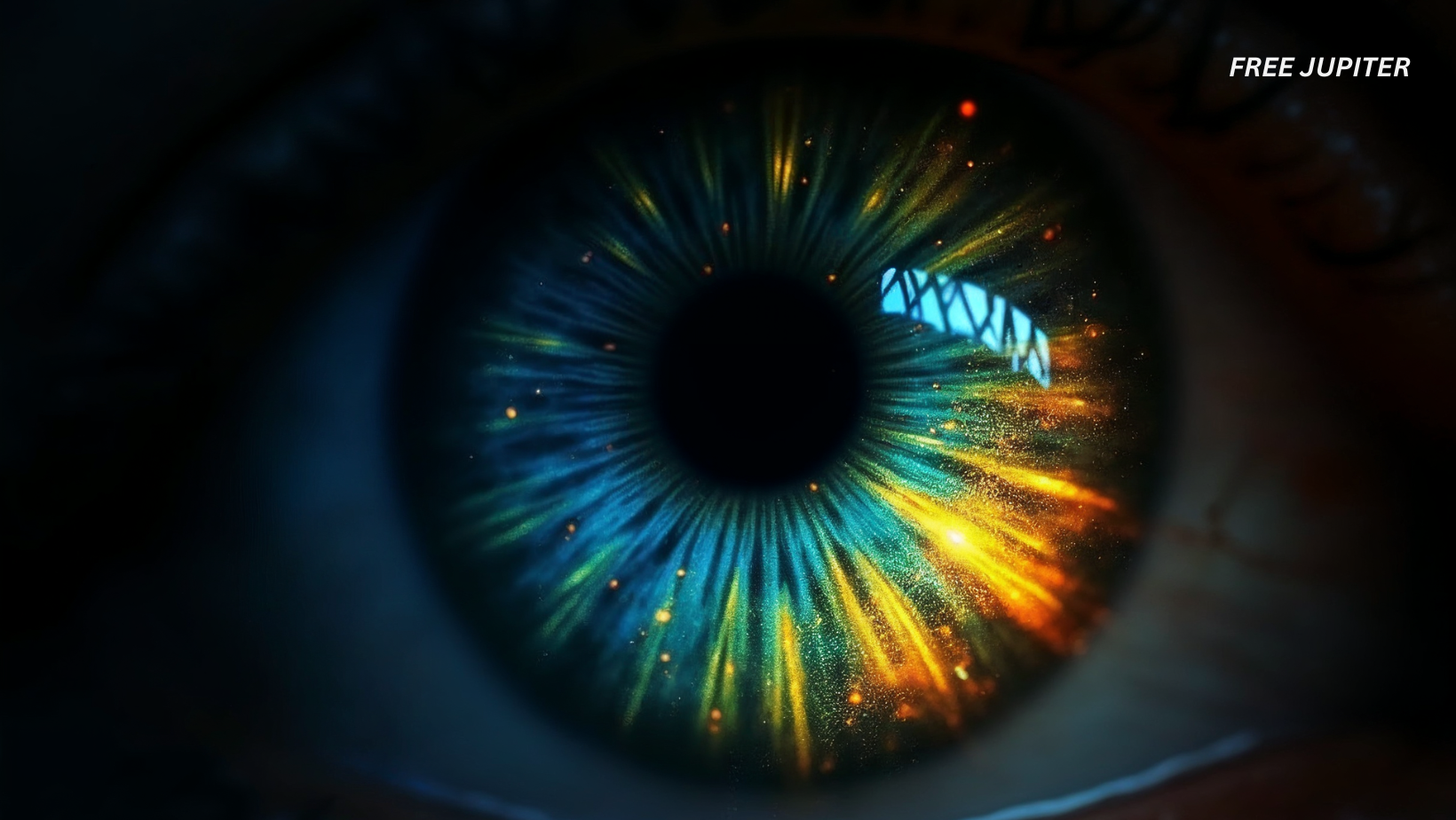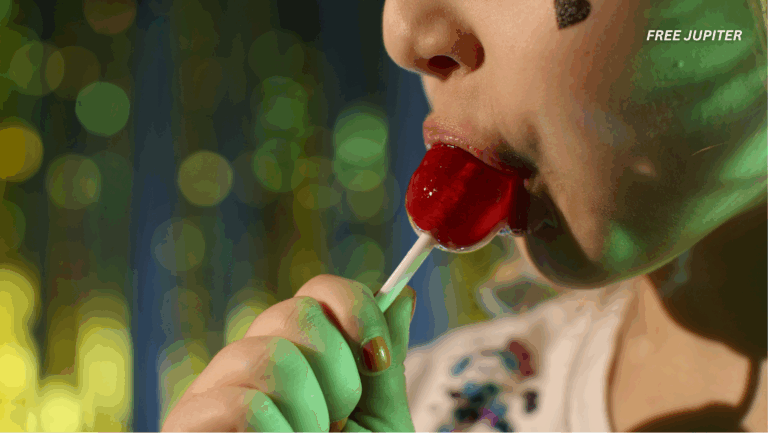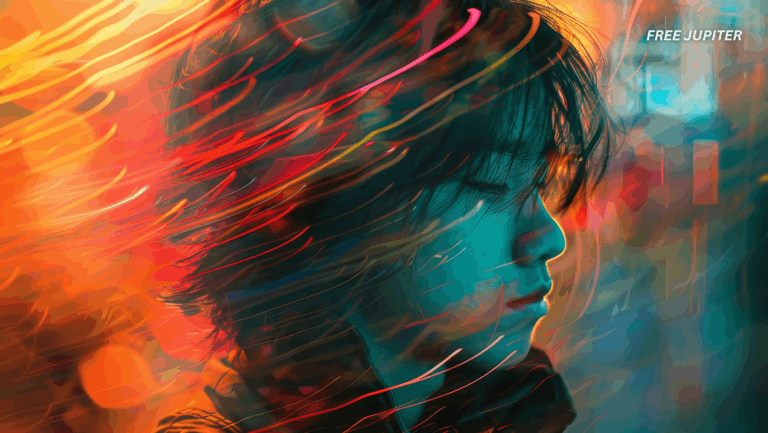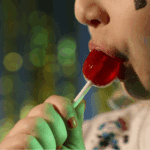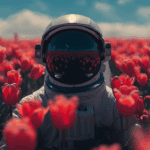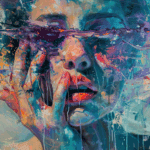Friendly Note: FreeJupiter.com shares general info for curious minds 🌟 Please fact-check all claims—and always check health matters with a professional 💙
In a twist worthy of a science fiction novel, researchers in the United States have announced the discovery of a color so unique, it eludes natural human perception. Dubbed “olo,” this color is not something you’ll spot on a paint swatch or a digital display. Instead, it exists just outside the boundaries of what our eyes can naturally detect-yet five individuals have managed to glimpse it, thanks to a high-tech experiment that’s as quirky as it is groundbreaking.
The Curious Case of Olo: What Is It?
So, what makes olo so special? Unlike the familiar hues that fill our world, this color occupies a place beyond the visible spectrum, only accessible through a precise scientific process. Those who have seen it describe olo as a blue-green shade, reminiscent of teal, but with a vibrancy that surpasses anything found in nature or on your favorite streaming device. Imagine the most saturated peacock feather you’ve ever seen, then crank up the intensity-now you’re getting closer to olo, though you still can’t quite picture it.
How Did Scientists Reveal a Color No One Can See?
The journey to discovering olo began with a fundamental question: What would happen if you could activate just one kind of color-detecting cell in the human eye? Normally, our eyes use three types of cone cells-each tuned to pick up short (blue), medium (green), or long (red) wavelengths of light. These cones work together, overlapping in their sensitivity, so any light that stimulates one type usually triggers the others as well.
Ren Ng, a professor of electrical engineering and computer science at the University of California, Berkeley, wondered what visual experience would emerge if only the medium-wavelength (M) cones were stimulated, without interference from their neighbors. This is something that never happens in the natural world, since no single wavelength of light can isolate just the M cones.
Enter Oz-a device named after the legendary wizard and his emerald-hued city. This high-precision instrument uses microbursts of laser light to target individual photoreceptors in the retina, essentially tricking the eye into seeing what it otherwise never could. By focusing on just the M cones, the team could evoke a color experience that’s impossible under ordinary circumstances.
A Peek Behind the Curtain: The Oz Technology
Oz is not your average lab gadget. It’s a stabilized, retina-mapping marvel capable of directing laser pulses with pinpoint accuracy. The technology’s roots lie in vision science, where it’s already used to study eye diseases. But in this experiment, Oz became a portal to a visual world beyond the ordinary.
The process started in 2018, led by doctoral student James Carl Fong at UC Berkeley. Later, Hannah Doyle, another doctoral student, conducted the experiments that allowed human subjects to witness olo firsthand.
Who Has Seen Olo?
Just five people have experienced this enigmatic color: four men and one woman, all with typical color vision. Three of them-including Ng and Austin Roorda, a co-inventor of the Oz device-are co-authors of the research. The other two participants were unaware of the experiment’s true purpose until they took part.
Read more: Therapist Reveals 6 Habits That Make Couples Feel Truly Emotionally Secure In Their Relationships
What Does Olo Look Like?
Describing olo is a bit like explaining a new flavor to someone who’s never tasted it. Those who’ve seen it compare it to a saturated teal or turquoise, but with a depth and intensity that makes even the brightest natural colors seem dull by comparison. One participant called it “unimaginably saturated” and “breathtaking,” while another said it was “more vivid than any color you can encounter in the real world”.
If you’re trying to imagine it, think of a teal square, then mentally turn up the saturation far beyond what your screen can display. Olo is not just a color you haven’t seen-it’s a color you can’t see, unless you’re one of the lucky few with access to Oz.
Is Olo Truly a “New” Color?
Here’s where things get philosophical. Olo has always existed in the sense that the combination of light and biology to produce it is possible, but it’s never been accessible to the human eye without technological intervention. Some experts debate whether this makes it a genuinely new color or simply a previously unseeable variation of green or blue.
From a sociolinguistic perspective, though, once people start naming and talking about olo, it becomes a part of our shared experience-even if most of us can’t see it yet.
How Do Humans Normally Perceive Color?
Color vision is a marvel of biology and physics. Our eyes contain three types of cone cells, each tuned to a different part of the light spectrum. The signals from these cones are processed by the retina and sent to the brain’s visual cortex, where they’re integrated into the colors we know and love.
But because the cones’ sensitivities overlap, the colors we see are always a blend of signals. That’s why it’s impossible to isolate the M cones with natural light alone-a challenge the Oz device was designed to overcome.
Read more: Parents Who Make This Mistake Raise ‘Mentally Weak Children,’ Says Psychiatrist
Could Oz Help People With Color Vision Deficiencies?
The implications of this research go beyond curiosity. Scientists are exploring whether Oz could help people with color vision deficiencies, such as those who have trouble distinguishing between reds and greens. If the technology can stimulate specific cones to compensate for missing or weak signals, it could one day enhance color perception for millions.
There’s even the tantalizing possibility of “boosting” normal color vision to a higher dimension-a state called tetrachromacy, where people could see colors beyond the familiar rainbow. However, miniaturizing the technology for everyday use remains a significant challenge, as the current setup requires precise stabilization and direct retinal targeting.
A World of Color: Do Animals See the Same Spectrum?
Humans aren’t the only creatures with a taste for color. Some animals, like the mantis shrimp, have a dozen different types of color receptors and can see ultraviolet and polarized light-spectra that are invisible to us. On the other hand, dogs have just two types of cones and mostly see shades of yellow and blue.
But even with all this diversity, the way animals mix and perceive colors can be fundamentally different from ours. For example, while humans can blend red and blue to see purple, the mantis shrimp’s visual system doesn’t mix colors the same way.
Why Can’t We Just Print or Display Olo?
Don’t expect to see olo popping up in your next graphic design project. The color exists outside the gamut of display technology, meaning no screen, printer, or pigment can reproduce it. It’s a private show for those who undergo the Oz experiment-and even then, only under carefully controlled conditions.
The Science of Seeing: How Do We Know What Others Perceive?
Color isn’t just about physics; it’s also about biology and language. The light that enters your eye is only part of the story. How your brain processes that light, and what words your culture uses to describe it, shape your experience of color.
This explains why people can disagree about the color of a dress in a viral photo or why some languages have more words for blue than others. Our brains interpret color based on context, expectation, and even the temperature of the light around us.
Read more: Billions of Gmail Users Were Issued Urgent Warning Over An ‘Extremely Sophisticated Attack’
The Debate: Is Olo the Real Deal?
Not everyone in the scientific community is convinced that olo is a brand-new color. Some argue that it might just be an extreme version of green, visible only under highly specific circumstances. But for those who’ve seen it, the experience is undeniably distinct-a sensation that feels like discovering a new sense.
What’s Next for Olo and Color Science?
The discovery of olo is more than a quirky footnote in vision science. It opens up new questions about the limits of human perception, the potential for technological augmentation, and the ways our brains construct reality from the raw data of light.
Researchers are now investigating whether similar techniques could unlock other hidden colors or help those with visual impairments see the world in new ways. The journey from the Emerald City of Oz to the laser labs of Berkeley is just beginning.
Final Thoughts: A Colorful Future Awaits
Olo may never appear on a billboard or in your favorite app, but its discovery is a reminder that the world is still full of surprises-sometimes hiding in plain sight, just beyond the reach of our senses. As technology continues to stretch the boundaries of what we can perceive, who knows what other colors-or experiences-await us just around the corner?
For now, the story of olo is a testament to human curiosity, ingenuity, and the endless complexity of the seemingly simple act of seeing.

